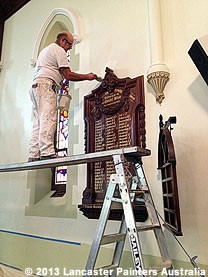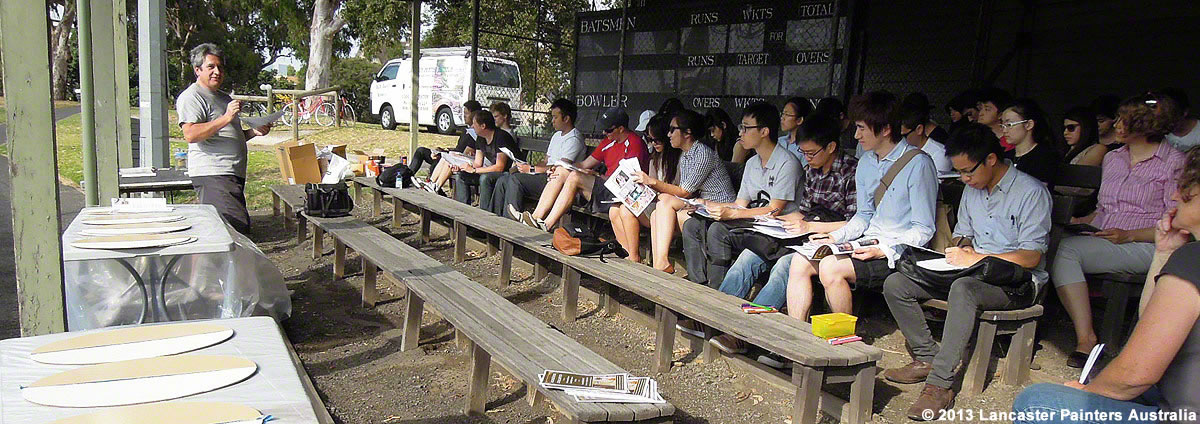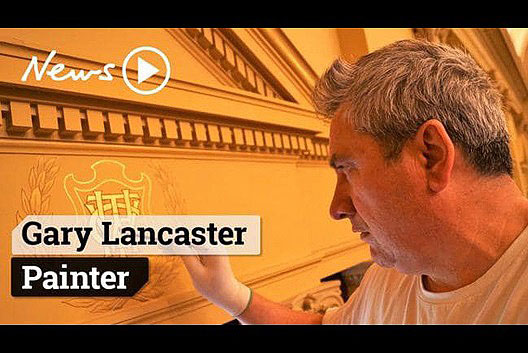Traditional Heritage Skills
Traditional heritage skills are performed by traditional trades (known as traditional building trades or preservation trades) who actively practice their craft in respect of historic preservation[1], heritage conservation, or the conserving and maintenance of the existing built environment. Though traditional trade practitioners may at times be involved in new construction, the emphasis of the categorisation is toward work on existing structures, regardless of their age or their historic value, with a specific interest in replication or conservation of the original results and craft techniques.
Traditional Trade Technologies
The Lost Trades

The work performed by these professional practitioners is not only essential to the maintenance of the historic built environment, but also to the preservation of the traditional trade skills and knowledge themselves. In many cases, traditional trade skills and techniques date back centuries. Traditional trades such as carpenters and timber framers; masons, plasterers, lime burners, and brick makers; painters; blacksmiths; and slate, metal, shingle, tile, and thatch roofers, are anecdotally said to be “dying” arts. While it is true that some techniques of the past are not well enough understood, it is also true that these crafts have been practiced continuously all over the world without dying at all.
Traditional trades not only restore and help to maintain buildings, but also stabilize priceless archaeological sites, and in doing so, help us understand the techniques used at places like Cuzco, Stonehenge, and Angkor Wat. Such trades are not solely practiced for the conservation of monumental heritage sites and can be applied to conserve vernacular sites such as barns.
Materials Technologies

Green Trades
Traditional building technologies tend towards a closer relationship of the built environment to an “in practice” understanding, interaction and use of natural resources and recycled or salvaged building materials than is common in the practice of modern building technologies.
For example: a traditional timber framer in search of “difficult to acquire” materials with which to rebuild heritage structures will tend to seek out an understanding of forest management, tree harvest, conversion process and building design and technique. These integrated skills and their supportive knowledge base both in scale and localization are readily adaptable to strategies of sustainable new build economies.
Old buildings and structures were built once, energy and natural resources previously expended, and to adaptively reuse or recycle them often requires an understanding and appreciation of not only how the older materials with which they were built work together in a structure, but a need to understand the techniques and traditional heritage skills required by which these materials were originally worked, and an understanding of how they can most optimally be worked now.
Traditional Heritage Skills – Knowledge Of Process
As opposed to an emphasis on materials science (as with an architectural conservator) the primary orientation of a traditional trade practitioner tends toward the “in process” work activity and physical interaction and intervention with the building materials and the coordination, education and project management of infield work teams.

Traditional Heritage Skills – Restoring Our Heritage Film
Team Members
Trades with traditional heritage skills are quite often team members with architectural conservators, preservation architects and structural engineers in both the design phase investigation of heritage sites as well as involved directly in the undertaking of the “hands on” restoration process. Traditional trades as a resource to the historic preservation industry provide a physical grounding in feasibility, construction logic, field and site logistics, reference to skilled traditional trades practitioners, estimate and budget considerations.
Availability
Practitioners trained in traditional heritage skills are generally available to preservationists and property managers who give themselves a chance to find them. Besides the Internet and verbal networking, information about traditional trades can be found through trade associations and training programs, both private and governmental. If a particular job is limited to union workers, the union should provide workers with the appropriate skills or else allow an exception for a particular task. A traditional heritage trades practitioner may also be able to recommend experts in related skills, promoting good communication among the different disciplines at work on any given project.
Problems
Since the 1940s, the natural foes of restoration craftsmanship have been “lowest bidder” contract selection, pressure from developers to destroy and build new, the blue-collar versus white-collar class distinction, cheaper production-oriented materials such as gyprock (as a replacement for lath and plaster), and a fondness for untested “quick fix” solutions. With the increase in appreciation for the environment, and because of the loss of some special landmarks and vital neighbourhoods, these foes have lost some of their clout, and there is increased respect for the skilled people who can help us maintain what we have.
Traditional Heritage Skills Education

Photo featured above: Traditional heritage painter, decorator and artisan “Gary Lancaster”, experienced in traditional heritage skills, presented a workshop of heritage specialist painting and decorating skills for graduate architects of the University of Melbourne, Victoria at the invitation of Associate Professor Donald Ellsmore.
Basic levels of training in building and craft skills are a prerequisite to specialisation in traditional trades work. Individuals with an interest in learning a traditional trade can seek out learning opportunities either through formal vocational programs or through informal mentorship under the tuition of an experienced traditional trade practitioner. Family businesses, trade unions, historic preservation businesses, government programs, tertiary programs and non-profit organisations are areas where an interest to provide education of traditional trade practice can often be found. As the individual increases in skill, learning will come from study, from workshops, from travel and personal contacts, from mentoring, and from clues found in the work itself.
Definitions
- Heritage preservation, heritage conservation or historic preservation, is an endeavour that seeks to preserve, conserve and protect buildings, objects, landscapes or other artefacts of historical significance. The term tends to refer specifically to the preservation of the built environment, and not to preservation of, for example, primeval forests or wilderness.
- Scagliola (from the Italian scaglia, meaning “chips”), is a technique for producing stucco columns, sculptures, and other architectural elements that resemble inlays in marble and semi-precious stones. The Scagliola technique came into fashion in 17th-century Tuscany as an effective substitute for costly marble inlays, the pietra dura works created for the Medici family in Florence. Scagliola is a composite substance made from selenite, glue and natural pigments, imitating marble and other hard stones. The material may be veined with colours and applied to a core, or desired pattern may be carved into a previously prepared scagliola matrix. The pattern’s indentations are filled with the coloured, plaster-like scagliola composite, and then polished with flax oil for brightness, and wax for protection. The combination of materials and technique provides a complex texture, and richness of colour not available in natural veined marbles.




